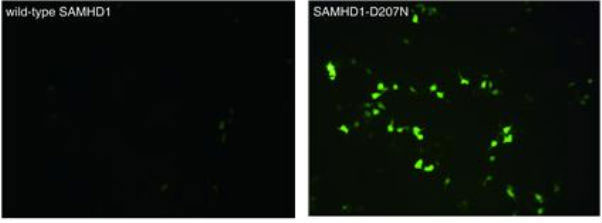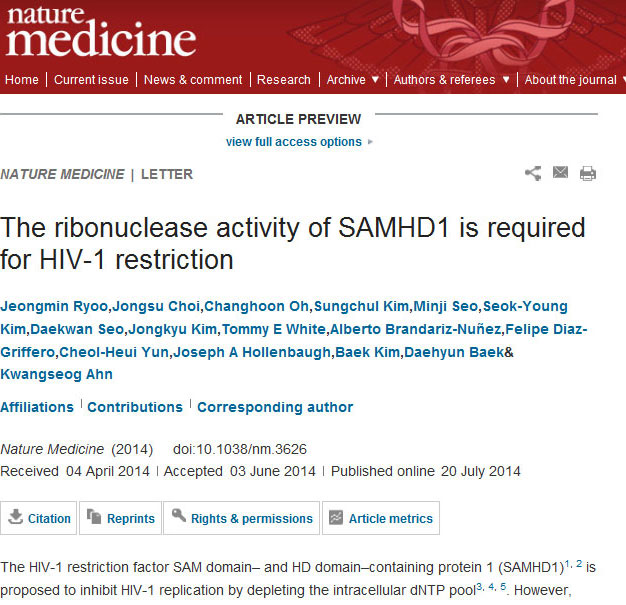Commonly known as AIDS, the acquired immune deficiency syndrome is one of humanity's incurable diseases, one which take thousands of lives every year. According to statistics from the U.N.'s UNAIDS program, the number of those suffering from AIDS exceeded 35 million in 2012.
A group of Korean medical researchers recently discovered an enzyme which works as a restriction factor on ribonucleic acid (RNA). RNA is a kind of nucleic acid upon which the human immunodeficiency virus (HIV) is based.
Led by Professor Ahn Kwang-seog of Seoul National University, the team of scientists has proven for the first time worldwide that an enzyme, SAMHD1, works as an RNA restriction factor and inhibits HIV infection by decomposing the RNA.


The research team also found that the proliferation of HIV is hampered in cells with a low base concentration. This is because breakdown enzymes are activated in SAMHD1, which in turn helps the enzyme decompose the RNA in the HIV. When the base concentration gets higher, on the contrary, SAMHD1 becomes inactive. The research results show that SAMHD1 is controlled by the initial base concentration.
SAMHD1 is a protein made from 626 amino acids. SAMHD1 is known to function as an HIV infection inhibitor, but the accurate action mechanism was not known until now.
The research results were published online in the June 21 edition of Nature Medicine.
The research was conducted as part of a project supported by the National Research Foundation of Korea, part of the Ministry of Science, ICT & Future Planning.

By Yoon Sojung
Korea.net Staff Writer
arete@korea.kr

A group of Korean medical researchers recently discovered an enzyme which works as a restriction factor on ribonucleic acid (RNA). RNA is a kind of nucleic acid upon which the human immunodeficiency virus (HIV) is based.
Led by Professor Ahn Kwang-seog of Seoul National University, the team of scientists has proven for the first time worldwide that an enzyme, SAMHD1, works as an RNA restriction factor and inhibits HIV infection by decomposing the RNA.

In the left-hand photo, no green spots are found, as the green-painted HIV mutation is restricted by normal SAMHD1. In the right-hand photo, green spots from the HIV mutation are found in cells with SAMHD1 and without the RNA decomposing enzyme. (images courtesy of the Ministry of Science, ICT & Future Planning)

Professor Ahn Kwang-seog of Seoul National University (photo courtesy of the Ministry of Science, ICT & Future Planning)
The research team also found that the proliferation of HIV is hampered in cells with a low base concentration. This is because breakdown enzymes are activated in SAMHD1, which in turn helps the enzyme decompose the RNA in the HIV. When the base concentration gets higher, on the contrary, SAMHD1 becomes inactive. The research results show that SAMHD1 is controlled by the initial base concentration.
SAMHD1 is a protein made from 626 amino acids. SAMHD1 is known to function as an HIV infection inhibitor, but the accurate action mechanism was not known until now.
The research results were published online in the June 21 edition of Nature Medicine.
The research was conducted as part of a project supported by the National Research Foundation of Korea, part of the Ministry of Science, ICT & Future Planning.

A captured image from the Nature Medicine homepage introduces the research about HIV-1 restriction.
By Yoon Sojung
Korea.net Staff Writer
arete@korea.kr